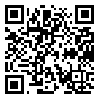BibTeX | RIS | EndNote | Medlars | ProCite | Reference Manager | RefWorks
Send citation to:
URL: http://jpcp.uswr.ac.ir/article-1-357-fa.html
Objective: Depression is a growing public health problem, which needs more consideration in primary care settings. By focusing primarily on developmental psychology, attachment style is one of the most influential variables on the risk of internalized disorders. Although attachment styles have strong effects in emotional aspect of human mental life, emotional turbulence and dysfunction are considered as key factors in depression disorder. This study aimed to examine the effect of attachment styles on emotion recognition, emotion regulation, emotional perspective taking, and depression in multivariate space. To this end, attachment styles are considered as input separately; emotion recognition in three categories (neutral, negative, and positive), emotion regulation, and emotional perspective taking set as mediator of equation; and depression as an output.
Methods: Participants were all high-school students, selected based on multistage random sampling method. Finally, 296 students participated in the study and all ethical issues included informed consent were approved by the Ethics Committee of University of Isfahan. Statistical analysis was done by AMOS 22 and SPSS 22. The study instruments were attachment styles questionnaire (ASQ) by Hazen and Shaver (1987), facial emotion recognition pictures by Ekman and Frizen (1978), emotion regulation skills questionnaire (ERSQ) by Berking and Znoj (2008), emotional perspective taking dilemmas, and Beck depression inventory (BDI-II) (1996). The data analysis was done using Structural Equation Modeling.
Results: According to model fit indices of χ2 = 2703.41, df = 1804, CFI = 0.86, and RMSEA = 0.04, this model relatively appropriate fit the adolescents girls sample, thus the main hypothesis of the study was confirmed. In addition, attachment styles have direct and indirect effects on depression. The indirect effect of attachment styles were mediated through emotion recognition, emotion regulation, and emotional perspective taking.
Conclusion: Attachment styles have a strong and significant effect on emotional state and also probability of depression of adolescent girls. Children in secure relationship learn to recognize and regulate their emotions in addition to taking others’ perspective about emotional filed. Thus, in facing high pressure situations of adolescence, they would experience lower levels of depression.
دریافت: 1395/5/23 | پذیرش: 1395/9/5 | انتشار: 1395/10/12
| بازنشر اطلاعات | |
 |
این مقاله تحت شرایط Creative Commons Attribution-NonCommercial 4.0 International License قابل بازنشر است. |



